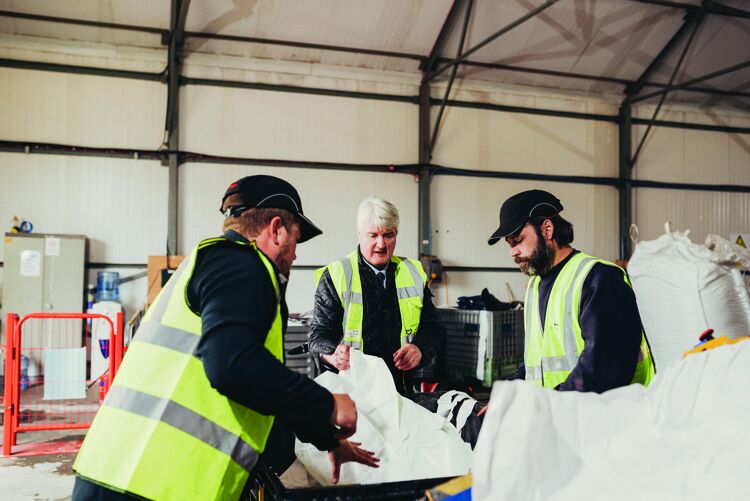Soyang Europe unveils innovative recycling scheme with Blue Castle

Rob Fletcher speaks to Mark Mashiter, Managing Director at Soyang Europe about their joint initiative with Blue Castle which will benefit any print service provider with digital output.
Printable material manufacturer and distributor Soyang Europe has linked up with waste management specialist Blue Castle Group to form a new recycling scheme, designed to help print companies with their PVC waste.
The PVC Recycling Membership Scheme will allow print service providers (PSPs) to send their waste PVC to Blue Castle, where it will use its specialist machinery to convert the material into a reusable format.
Soyang Europe and Blue Castle have said the initiative will help address a major issue in the industry in that while PVC banner material is widely used across the print sector, it is not currently recyclable.
Speaking to FESPA.com about the project, Mark Mashiter, managing director at Soyang Europe, said Soyang Europe wants to do the right thing for the industry, and the joint initiative with Blue Castle represents its commitment to helping to protect the environment, as well as promote print as a sustainable medium.
“We know that so many of our customers end up sending PVC product to landfill after it’s done its job as a printed graphic – and we thought that there had to be a better way,” he said. “Partnering with Blue Castle has allowed us to deliver a solution that tackles this head on.”
In terms of what sort of printing company can benefit from the recycling scheme, Mashiter has said it is open to any PSP with digital output. However, with all the companies involved in the recycling chain being UK-based, the scheme is only available to customers in the UK at present.
“We’re already seeing significant interest from high volume users of PVC; be it backlit, banner or flex face products, there’s pressure there to deliver a solution, especially when that pressure is coming from our customers’ clients in retail where they’re ever more required to show provenance and transparency in all areas of their business,” he said.
Marie Harley, chief executive of Blue Castle, has also said the waste and energy consultancy has developed and rigorously tested all of the machinery needed to convert PVC banner into a reusable format.
Harley said in a statement: “Our team has worked tirelessly to not only cultivate a workable solution for PVC waste recycling, but also to strengthen relationships with partner companies capable of using this material once it has been processed and broken down.
“Reaching the point of viability with the project is an incredibly exciting time for the team at Blue Castle and for our partners at Soyang Europe. We’re here to disrupt the printing industry!”
Topics
Interested in joining our community?
Enquire today about joining your local FESPA Association or FESPA Direct
Recent news

The importance of ink for large format printers
Ink is crucial for large format inkjet printers, influencing substrate compatibility, productivity, and cost. Nessan Cleary discusses the three main types which include UV-curable ink, latex ink and eco-solvent ink. Each ink type has specific strengths and weaknesses, making printers choice dependent on budget and intended applications.

What are the benefits of Direct-To-Fabric printing?
Direct-to-fabric printing is gaining popularity for high-volume textile production, enabling on-demand, customized short runs. These printers offer ink flexibility, accommodating various fabric types like cotton and silk, though ink development focuses on faster turnaround by reducing pre- and post-processing. Compared to traditional methods, direct-to-fabric inkjet printing is a more sustainable option due to reduced water and chemical usage, and localized production.

What are the opportunities for large format providers regarding digital touch screens?
Digital touchscreens are becoming increasingly common, offering businesses opportunities to improve customer engagement and streamline operations. Nessan Cleary shares, while more expensive to implement than standard digital displays due to complex software and integration needs, touchscreens provide self-service options, multilingual support, and can reduce staffing costs in various settings like retail, transportation, and healthcare.
